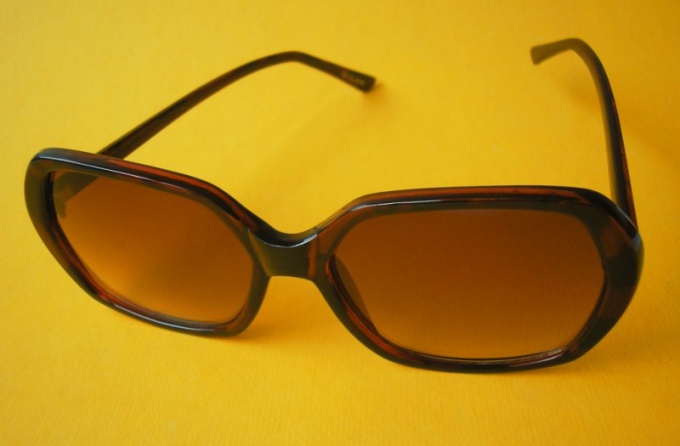One of the oldest analogues of sunglasses was found by archaeologists during excavations of ancient settlements of people living in the far North. These objects were made from tree bark or bone, which has a small hole for the eyes. These primitive glasses reduced exposure to bright sunlight, but didn't filter it, and, accordingly, were very harmful to the retina.
The first device that vaguely resembled modern sunglasses, was discovered in the tomb of Pharaoh Tutankhamun. It was the finest emerald two plates are connected to each other by bronze walls. Of course, such a luxurious accessory could not afford all the Egyptians are mere mortals defended the upper part of the face painted pieces of papyrus.
In medieval China judges used a special design, consisting of two bloated pieces of quartz. However, they did not protect their eyes from the sun, and was used to hide emotions and the expression of the eyes during the trial. These devices came to Europe by the Italian traveller Marco Polo. Initially manufacturing eyeglasses used gems, but it was a pretty costly material, and instead of emeralds and sapphires it's ordinary glass. In many medieval miniatures and frescoes are images of the blind with black points.
In the mid 18th century the Englishman James askew began experimenting with tinted lenses, he believed that blue or green lenses can help vision correction. However he invented the glasses were not sunglasses.
In the early 20th century, sunglasses began to gain momentum. This contributed to the silent film star, who protected his eyes from the bright piercing light of the Studio. Mass production of sunglasses began in 1929, when American Sam foster introduced its products under the brand name Foster Grant. In 1936 appeared the first glasses with polarized lens, which was invented by Edwin Land. With the 30-ies of the last century began the triumphant March of sunglasses across the world.
